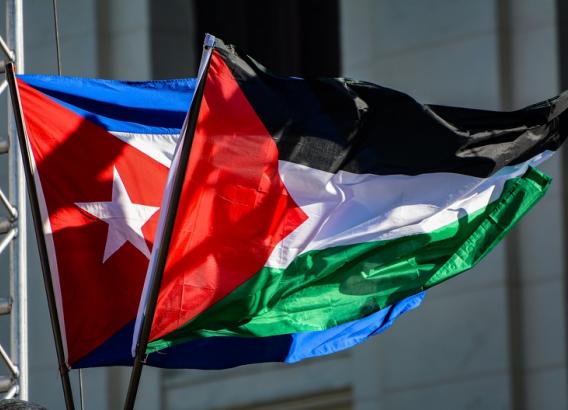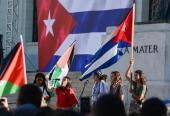Barranquilla Carnival Runs to the Rhythm of Colombian Cumbia

On Sunday, the congos, garabatos, and cumbia provided the music for fun at the Great Parade, where 170 groups explored the different rhythms and dances that frame the Barranquilla Carnival as an "Intangible Cultural Heritage of Humanity."
RELATED:
In 2008, the United Nations Educational, Scientific and Cultural Organization (UNESCO) granted this recognition to this festival, which is considered Colombia’s most important carnival due to its musical and cultural diversity that has kept it alive through generations.
Over 10,000 participants showcased the essence of the Barranquilla Carnival through cultural expressions such as cumbia, congos, garabatos, harlequin devils, mapale, black rhythms, little bulls, stick dancing, coyongos, and farotas.
The Road 40 Cumbiodromo was filled with colors with traditional costumes such as big heads, gigantic women, cuckoo monkeys, and golden Indians. Colombians also displayed their costumes of aliens, comic strip characters, tigers, lions, gorillas, elephants, giraffes, chimpanzees, and howler monkeys.
#CarnivalTime | In special coverage, teleSUR reached the neighborhood below in Barranquilla, Colombia, which provides folklore makers for the #Carnival2024. pic.twitter.com/9lmiOkAJpk
— teleSUR English (@telesurenglish) February 12, 2024
The 'River Bull Dance,' which originated in 1878 in the Rebolo neighborhood, is considered an institution not only because of its ancient origin but because it is part of the carnival spirit.
"I will stop dancing at the carnival the day my legs can no longer hold me up, and then I will ask to be carried," said Rafael Macias, a 52-year-old man who has been dancing the River Bull at every carnival for 30 years.
"The folk expressions in the Barranquilla Carnival parades are evidence of the hybridization and interculturality that nourish the festivities, which take elements from different areas of the Caribbean region and the country," said cultural researcher Carmen Melendez.
#Colombia | The celebration of the Carnival festival continues in Barranquilla, a colorful and joyful experience#Carnival #CarnivalTime2024 pic.twitter.com/uBfP1Rop5J
— teleSUR English (@telesurenglish) February 11, 2024
An example of an element feeding the Barranquilla carnival is the Farotas de Talaigua, which originated in the Bolivar department and represent the Indigenous revenge against the Spanish for the exploitation of the people during the Conquest and the Colony.
"The tradition will not be lost as long as we have stages like this, where communities can tell their stories," said Monica Ospino, director of that dance.
Similarly to other years, groups of musicians competed to win the "Golden Congo" with choreographies featuring sensual movements such as "the turn of the rooster," the live candela, the red skirt, the great golden cumbia, and the tasty woman.
#Colombia | Every year during the four days before Lent, the Carnival de #Barranquilla offers a repertory of dances and musical expressions originating from different Colombian culture views#CarnivalTime2024 pic.twitter.com/phrvL2FUco
— teleSUR English (@telesurenglish) February 11, 2024














Add new comment